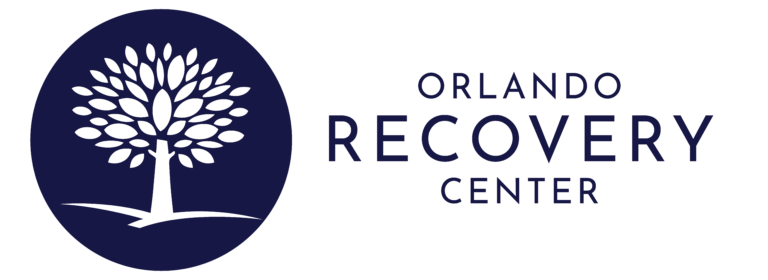Key Takeaways
- Heroin is a highly addictive substance derived from morphine and can be injected, sniffed, snorted, or smoked.
- Heroin binds to opioid receptors in the brain, leading to a ‘rush’ of euphoria, followed by relaxation, but increased use is needed over time to achieve the same effect.
- Withdrawal symptoms from heroin can be severe, driving the cycle of dependence and requiring comprehensive addiction treatment.
- Physical indicators of heroin addiction include constricted pupils, slurred speech, drowsiness, and track marks from injections.
- Chronic heroin use leads to serious health complications, including respiratory and cardiovascular issues, infections, and neurological damage.
- Behavioral changes associated with heroin addiction may include increased risk-taking, social withdrawal, and neglect of responsibilities.
- Heroin addiction can strain social interactions and relationships, with supportive social networks being crucial for recovery.
- Psychological indicators of heroin addiction include emotional instability, confusion, depression, anxiety, and sometimes hallucinations.
- Treatment for heroin addiction often involves medication-assisted therapy, counseling, and support groups, with a strong emphasis on the role of social support.
- A strong support system is critical in heroin addiction recovery, providing emotional, informational, and practical assistance.
Signs of Heroin Addiction
Identifying heroin addiction involves recognizing a range of symptoms that affect individuals physically, behaviorally, and psychologically. Physical signs include constricted pupils and track marks from injections, while behavioral changes may involve social withdrawal and neglect of responsibilities. Psychologically, heroin addiction can cause mood swings, confusion, and severe anxiety. Understanding these key indicators is essential for early detection and intervention, paving the way for effective treatment and recovery.
Heroin and Its Addictive Properties
Heroin is an extremely addictive drug derived from morphine, which is found in the opium poppy plant. Here’s a closer look at heroin’s properties, its effects on the brain and body, and the challenges of addiction:
What Is Heroin?
- Origin: Heroin, chemically known as 3,6-diacetylmorphine, is a semi-synthetic opioid made from morphine.
- Forms: It appears as:
- White Powder: Commonly found east of the Mississippi River; known for its higher purity and can be snorted or smoked.
- Black Tar: Predominantly in the western U.S.; sticky and less refined, usually smoked or injected.
How Heroin Works
- Delivery Methods: Heroin can be injected, sniffed, snorted, or smoked. These methods rapidly transport the drug to the brain.
- Brain Interaction: Heroin binds to opioid receptors, affecting pain, pleasure, heart rate, sleep, and breathing. It induces euphoria and relaxation but leads to addiction as users need increasing doses for the same effect.
The Addictive Nature of Heroin
- Euphoria to Dependence: Initial use causes intense pleasure, but over time, users develop tolerance and require more of the drug to achieve the same high.
- Withdrawal Symptoms: Discontinuing heroin leads to severe withdrawal symptoms, such as:
- Restlessness
- Muscle and bone pain
- Insomnia
- Diarrhea
- Vomiting
- Cold flashes
Historical and Geographical Context
- Historical Use: Opium has been used since around 3400 BC. Heroin was developed in the late 19th century and is now illegal in many places due to its addictive nature.
- Cultivation: Most opium poppies are grown in Afghanistan, with significant production also in Mexico and South America.
Impact on Brain Function and Physical Health
- Immediate Effects: Heroin causes a rush of pleasure, warm flush, dry mouth, and heavy limbs, but can also lead to slowed breathing and potential brain damage.
- Long-Term Effects:
- Brain Damage: Chronic use alters brain structure and function, affecting decision-making and stress response. The National Institute on Drug Abuse notes the intensity of the rush is linked to the dosage and speed of heroin’s brain assimilation.
- Physical Health Issues: Prolonged use leads to severe health problems, including:
- Respiratory depression
- Heart and organ diseases
- Malnutrition
- Cognitive impairments
Addressing Heroin Addiction
- Treatment: Overcoming heroin addiction often requires a comprehensive approach including:
- Medication-assisted therapy
- Counseling
- Support groups
Heroin’s profound impact on the brain and body underscores the critical need for effective treatment strategies and ongoing research into its effects and recovery options.
Physical Signs of Heroin Addiction
Heroin addiction often manifests through various physical symptoms that can signal the need for early intervention and treatment. Identifying these signs is crucial for addressing the problem promptly. Key physical indicators of heroin addiction include:
Treatment Can Be Life Changing
Whether you are struggling with addiction, mental health or both, our expert team is here to guide you every step of the way. Don’t wait— reach out today to take the first step toward taking control of your life.
- Constricted Pupils: Often described as pinpoint pupils, this is a common sign of heroin use.
- Slurred Speech and Poor Coordination: Difficulty with speech and motor skills can be evident.
- Excessive Drowsiness: Unexpectedly falling asleep or nodding off at inappropriate times.
- Irregular Breathing: Shallow, strained, or erratic breathing patterns are common.
- Track Marks: Visible injection sites on the arms, legs, or other body areas suggest intravenous drug use.
- Changes in Physical Appearance: Sudden weight loss or gain can be a red flag.
- Drug Paraphernalia: Items like burned spoons, needles, or syringes may be present.
- Skin Conditions: Unusual scabs or bruises, often from picking at the skin.
- Withdrawal Symptoms: Symptoms like sweating, shaking, and agitation when not using heroin.
These physical signs not only indicate possible addiction but also highlight the broader health risks associated with heroin use, such as infections and potential overdose. Immediate professional help is essential to prevent long-term health issues and cognitive impairments.
Physical Appearance Changes
Heroin use can lead to distinct changes in a person’s appearance. Some noticeable signs include:
- Constricted Pupils: Often termed ‘heroin eyes,’ this can be especially visible in well-lit settings.
- Poor Skin Health: Abscesses or infections from intravenous use are common.
- Track Marks: Visible marks from repeated injections on the arms or other accessible veins.
Long-term heroin use can lead to severe health issues, such as:
- Infectious Diseases: Hepatitis and HIV from sharing needles or other paraphernalia.
- Cardiac Issues: Infections of the heart lining and valves due to non-sterile needle use.
- Lung Complications: Problems like pneumonia and tuberculosis from respiratory depression caused by heroin.
Behavioral signs include ‘nodding out,’ where individuals frequently fall into a semi-conscious state, affecting social interactions and physical capabilities. Mental deterioration and impaired stress management are also concerning effects.
Long-Term Health Complications
Chronic heroin use can lead to a range of severe health complications affecting multiple body systems:
- Respiratory Problems: Issues such as pneumonia and tuberculosis due to heroin’s depressive effects on breathing.
- Cardiovascular Issues: Infections of the heart lining and valves, particularly from unclean needles.
- Neurological Damage: Memory lapses, cognitive impairments, and poor decision-making abilities.
- Liver and Kidney Disease: Caused by additives in street heroin that clog blood vessels.
- Gastrointestinal Issues: Chronic constipation and malnutrition from disrupted digestive processes.
- Increased Risk of Blood-Borne Viruses: Including hepatitis B and C and HIV from sharing injection equipment.
- Nasal Tissue Damage: From snorting heroin, leading to conditions like a perforated nasal septum.
These complications are exacerbated by tolerance and physical dependence, requiring increasing doses of heroin for the same effect, leading to heroin use disorder. Withdrawal symptoms can be severe, and the risk of overdose is high due to unpredictable drug purity.
Behavioral Changes Associated with Heroin Addiction
Heroin addiction often leads to significant behavioral changes that can signal the need for intervention. These behavioral signs include:
- Increased Risk-Taking: Individuals may engage in risky social and legal behaviors, which are uncharacteristic of their usual conduct.
- Drug-Specific Language: Adoption of new slang or terminology related to heroin use can indicate an issue.
- Social Withdrawal: A person might isolate themselves from family and friends, preferring to be around other drug users.
- Financial Instability: Sudden or unexplained financial difficulties may arise as money is diverted to fund the heroin habit.
- Neglect of Responsibilities: Decline in work or school performance and a lack of attention to personal responsibilities are common.
- Mental Health Changes: Mood swings, depression, anxiety, and increased irritability often accompany heroin addiction.
Identifying these behavioral changes is crucial for timely intervention. If you suspect someone is struggling with heroin addiction, seeking professional help is essential. For more information on treatment options, visit SAMHSA’s National Helpline.
Impact on Social Interactions and Relationships
Heroin addiction can severely affect an individual’s social behavior and relationships. Key impacts include:
- Strained Relationships: Addicted individuals may withdraw from loved ones, engage in secretive behaviors, or prioritize drug use over social obligations, leading to trust issues and social isolation.
- Negative Social Interactions: Increased isolation or association with other drug users can exacerbate the addiction and hinder recovery.
- Importance of Support: Positive social support is crucial for recovery. Research has shown maintaining non-judgmental, abstinence-positive relationships can improve treatment outcomes.
Effective treatment programs often focus on rebuilding and strengthening social connections. This includes involving family and friends in the recovery process to support a successful transition to sobriety.
Impact on Daily Life and Responsibilities
Heroin addiction can disrupt daily life and responsibilities significantly. Common effects include:
- Neglect of Personal Hygiene and Duties: The compulsion to use heroin often leads to a lack of interest in personal hygiene, work, and family responsibilities.
- Decline in Performance: Work or school performance may deteriorate as focus shifts to obtaining and using heroin.
- Irregular Sleep and Eating Patterns: Erratic behavior associated with heroin use can lead to disrupted sleep and eating habits, affecting overall health.
- Financial Problems: Funds may be diverted to support the addiction, leading to debt or theft.
- Strained Relationships: Relationships with family and friends often suffer due to behavioral changes and unreliability, potentially leading to estrangement or homelessness.
Addressing these challenges is a key component of recovery. Treatment programs typically include strategies to help individuals rebuild their daily routines and manage responsibilities, facilitating a return to a stable and productive life.
Psychological Signs of Heroin Addiction
Heroin addiction significantly impacts psychological well-being, presenting a range of symptoms that can impair daily functioning. Key psychological signs of heroin addiction include:
- Emotional Instability: Intense and unpredictable mood swings are common among users.
- Confusion: Difficulty with disordered thinking and decision-making may occur.
- Depression and Anxiety: Persistent feelings of sadness, worry, or fear are prevalent (research).
- Despair: Suicidal thoughts may arise due to the overwhelming nature of addiction.
- Hallucinations: Some individuals may experience hallucinations as a result of heroin use.
These psychological effects are linked to heroin’s impact on brain function, particularly its interaction with opioid receptors, which alters perceptions and emotions.
Mood Swings and Emotional Instability
Heroin addiction often manifests through emotional and behavioral changes, notably mood swings and emotional instability. These symptoms arise from the drug’s effect on the brain’s emotional regulation:
- Mood Fluctuations: Users may experience heightened anxiety, agitation, and significant mood swings.
- Social Withdrawal: Emotional instability can lead to isolation from family and friends.
- Pre-existing Conditions: Increased levels of anxiety and depression are common before heroin use and may be temporarily alleviated by the drug, creating a cycle of dependency.
Heroin use often exacerbates co-occurring mental health disorders, with individuals using the drug to self-medicate underlying emotional pain. This dual diagnosis complicates treatment, as both the addiction and mental health conditions must be addressed simultaneously.
The Link Between Heroin Addiction and Mental Health Disorders
Heroin addiction is closely tied to various mental health issues, including depression and anxiety:
- Brain Chemistry: Heroin alters neurotransmitters and neural pathways related to pleasure and pain, leading to euphoria followed by a depressive crash.
- Chronic Effects: Long-term heroin use can result in persistent mood disorders, even after discontinuation of the drug.
- Withdrawal Symptoms: The withdrawal process is often accompanied by intense discomfort, including anxiety and depression.
- Social Impact: The stigma and lifestyle changes associated with heroin addiction, such as isolation and relationship breakdowns, can further exacerbate mental health issues.
Effective interventions typically involve a combination of medication-assisted treatment (MAT), counseling, and support systems that address both substance use and co-occurring mental health conditions. For more information on treatment options, visit SAMHSA’s National Helpline.
Navigating Heroin Addiction Treatment and Support
Seeking help for heroin addiction is a crucial step toward recovery. Several resources are available to support individuals and their loved ones through this challenging process:
- SAMHSA Helpline: The Substance Abuse and Mental Health Services Administration (SAMHSA) operates a confidential, 24/7 helpline at 1-800-662-4357 to assist in finding treatment facilities and support groups.
- Methadone Treatment: Methadone is a widely used medication for heroin addiction, helping users taper off heroin safely by reducing cravings and withdrawal symptoms.
- Detox Programs: These programs offer a supportive environment for managing withdrawal symptoms and are often the first step in addiction treatment.
Types of Treatment Programs:
- Inpatient Rehab: Provides 24-hour support in a structured environment, ideal for those needing intensive care and supervision.
- Outpatient Rehab: Allows individuals to maintain daily responsibilities while receiving treatment, suitable for those with stable living conditions and support systems.
Community support is also vital. Heroin addiction affects not only physical health but also relationships and overall quality of life. Engaging in support groups, Narcotics Anonymous meetings, and reconnecting with friends or faith-based groups can be instrumental in recovery.
Comprehensive Treatment Strategies
Effective treatment for heroin addiction requires a multifaceted approach, combining medication-assisted treatment (MAT) with behavioral therapies:
- Medication-Assisted Treatment (MAT): Involves medications like methadone to reduce cravings and withdrawal symptoms without the highs and lows of heroin. Other MAT options include opioid agonists, partial agonists, and antagonists, which interact with opioid receptors in a safer, less addictive manner.
- Behavioral Therapies: Delivered in outpatient or residential settings, these therapies aim to modify attitudes and behaviors related to drug use, develop healthy life skills, and provide ongoing support.
- Detoxification: The initial step in treatment, providing a safe environment for withdrawal, but it is not sufficient on its own. Continuous treatment is necessary to address the root causes of addiction and support long-term recovery.
Inpatient vs. Outpatient Treatment:
- Inpatient Programs: Offer round-the-clock care, ideal for individuals needing a structured, controlled environment.
- Outpatient Programs: Allow patients to continue with daily responsibilities while receiving treatment, offering flexibility.
Long-term treatment lasting at least 90 days is associated with better recovery outcomes. Choosing a treatment program that fits individual needs and provides a supportive environment is crucial for successful recovery.
The Critical Role of Support Systems
Recovery from heroin addiction is a complex process that relies heavily on a strong support system:
- Emotional and Practical Support: Family, friends, recovery groups, healthcare professionals, and peers in recovery provide crucial encouragement, accountability, and a sense of community.
- Prevention of Relapse: Support networks offer a safe space to share experiences, express concerns, and receive guidance, reducing feelings of isolation and loneliness.
- Rebuilding Relationships: Support systems help repair damaged relationships, restore self-esteem, and provide educational resources and coping strategies for daily recovery challenges.
Structured support groups, such as 12-step programs and recovery-oriented communities, are essential for maintaining sobriety and promoting overall well-being. A comprehensive support system provides a foundation for growth and stability, emphasizing the importance of community and interpersonal connections in the recovery process.
Get Drug or Addiction Help: Orlando Recovery Center
If you or a loved one struggles with drug or alcohol addiction, Orlando Recovery Center is here to help. Our physician-led, evidence-based rehab programs include medical detox, inpatient and outpatient rehab, and a full continuum of care in between. Our compassionate team will help you start life fresh with the tools, coping strategies and resources you need to succeed. Don’t wait — contact a Recovery Advocate today to see how we can help.









